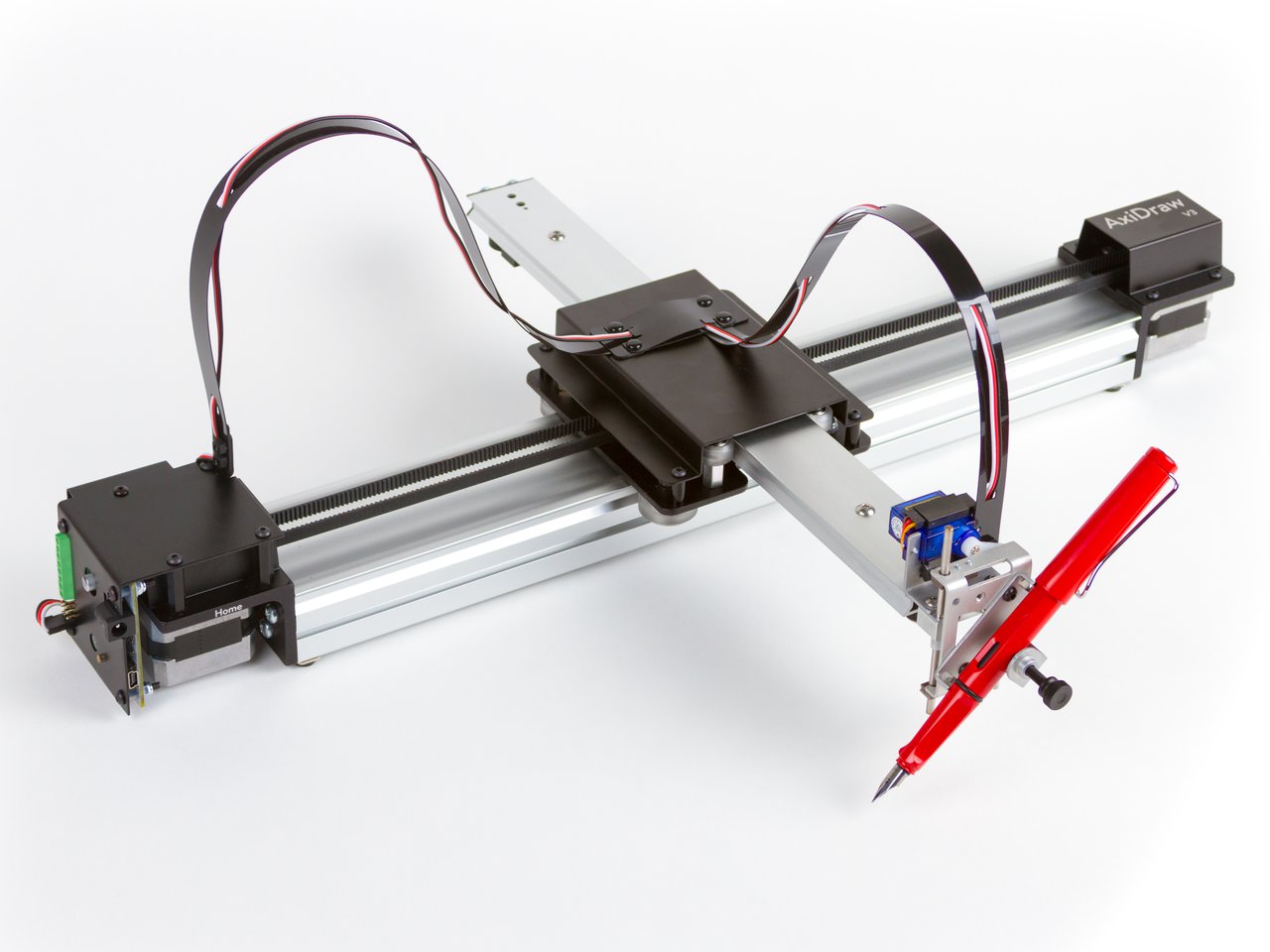
We’ll be at this year’s Bay Area Maker Faire, May 19-21 with Tube Time and the MOnSter 6502 project. We’ll hope to see you there!





We’ll be at this year’s Bay Area Maker Faire, May 19-21 with Tube Time and the MOnSter 6502 project. We’ll hope to see you there!

The second annual Robot Art contest Is in its final lap:
The Robot Art 2017 competition will be running between now and May 15th when more than $100,000 in awards will be given to the top painting robots. Winners will be determined based on a combination of public voting, professional judges consisting of working artists, critics, and technologists, and by how well the team met the spirit of the competition – that is to create something beautiful using a physical brush and robotics.
You can help by voting on the artwork now!

HEXceramic posted examples of using StippleGen to create lasered molds for making ceramic tiles. Very cool!

The folks at Mouse-Sensitivity.com used the AxiDraw to do a mouse sensor accuracy test, comparing the Logitech G900, G700s, and G9X (and a cheap HP they had on hand). The resulting visualization of the sensor information is fascinating!
We just got a copy of the December 2016 Funk Amateur, a German ham radio and electronics magazine.
There’s a two page spread on our ATmegaXX8 Target Boards with examples of how to use them for various circuit and projects.

Dave K. sent us these pictures of the menorah he built with the Deluxe LED Menorah kit. It’s a one-of-a-kind project, made from scrap wood from his shop.

The base has a cutout to hold the PCB and battery holder, and the LEDs are wired up through the blocks of wood. Thanks for sharing your project, Dave!

This new AxiDraw has been redesigned from the ground up for high performance. It features smooth rolling wheels on custom aluminum extrusions, specially designed for high stiffness and light weight. Its sturdy, rigid construction gives it finer quality output and in most applications allows it to operate at up to twice the speed of the previous AxiDraw, which it replaces.
As with the previous version, AxiDraw is a simple, modern, precise, and versatile pen plotter, capable of writing or drawing on almost any flat surface. It can write with fountain pens, permanent markers, and other writing implements to handle an endless variety of applications. Its unique design features a writing head that extends beyond the body of the machine, making it possible to draw on objects bigger than the machine itself.
AxiDraw V3 is available to order today, and begins shipping next week. See it in action and learn more on the product page.
AYAB — All Yarns Are Beautiful — is an open source hardware and software project that provides an alternative way to control the widely-loved Brother KH-9xx range of knitting machines using a computer. There are other hacks (such as Img2Track, Knitic and electro-knit) which work with certain machines in certain conditions. The AYAB interface works with all Brother KH-9xx machines except the KH-970.

We’ve just launched a new interface board for the AYAB project. They’ve written about it on their site, and you can read the product details on our store page for it.
Historically, these machines were programmed with semi-transparent picture cards which were scanned by the machine line by line. For later machines, you could enter a pattern via lots of tedious button-pressing. Some models had an add-on gadget that connected to your vintage TV.

With the AYAB interface, you can provide an image of up to a 200 pixel (or needle) size from your computer. The control is done by an Arduino-compatible microcontroller board, which replaces the vintage control board. We are excited to be helping to bring new capabilities to these beloved machines.

The makers of OSHChip are now producing the IC pins on their own for you to use in projects where square header pins just aren’t a good solution. The larger header pins can damage breadboard sockets, but Flip-Pins are the same size as traditional IC pins.

We’re stocking these elegant parts in packs of 10 of each of the available sizes: 8-pin, 14-pin, and 20-pin strips.

They come packaged in a carrier strip for ease of soldering into your PCB.
Shy wrote in to tell us about a tool he created to generate Hilbert curves from images for plotting called Image2Hilbert. (Main GitHub project link, here: )

Shy says:
I added a calculation in the interface and this line is approximately 35.881 meters long and it took about 45 minutes to draw.

Thank you, Shy, for sharing this tool! We look forward to seeing what people make with it.